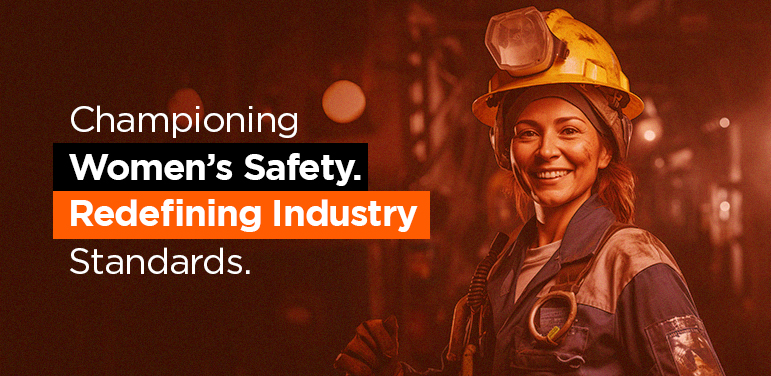As we move through 2025, the drive for meaningful change across workplaces continues to accelerate. While industries evolve rapidly, there remains a pressing need to ensure that women have the resources, support, and inclusive environments necessary to succeed for leading the phase “Championing Women’s Safety”.
Now more than ever, attention is turning to the tools and equipment that support professionals on the job-including personal protective equipment and workwear. The goal for the year ahead is clear: renew and expand our commitment to creating safer, more inclusive, and empowering work environments across all sectors.
Empowering Women through Functional, Inclusive Workwear
A crucial part of building inclusive workplaces involves providing gear that meets the distinct needs of women in demanding roles i.e. providing safe and comfortable workwear solutions for pregnant individuals in industrial settings, liners for women to feel comfortable at work and protecting their hair from breakage, rubbing and catching. This is especially relevant in high-risk industries such as energy, utilities, manufacturing, and the flame-retardant (FR) workwear sector, where safety cannot be compromised.
Women working in fire-prone environments – such as oil & gas, electrical utilities, and industrial manufacturing-require FR clothing that not only complies with safety standards but also fits properly and supports mobility. For too long, women have had to make do with ill-fitting men’s gear, often leading to discomfort or even compromised safety, which ultimately leads to harming Championing Women’s Safety.
The outdated approach of “shrink it and pink it” no longer meets the needs of today’s workforce. Priority is to deliver gear that’s engineered specifically for women-durable FR garments that offer both protection and performance, whether on a refinery floor or at a remote job site.
The concept of “unisex” revolves around being non-gender-specific, which is seen as a progressive notion in certain industries and forums. However, in our line of work, where safety is paramount, the idea of unisex can present challenges. Men’s and women’s bodies have unique characteristics, requiring distinct forms of support and protection, especially concerning safety wear and equipment. Emphasising a “one-size-fits-all” approach in such critical areas may lead to compromises in safety and comfort. Tailoring workwear and safety equipment to suit the individual needs of men and women ensures each worker can perform their duties with confidence.
Summing Up – Championing Women’s Safety
When women succeed in high-risk environments-such as those requiring flame-retardant protection-they do more than excel; they reshape the industry and open doors for future leaders. Each product innovation, policy change, and awareness campaign is part of a larger movement to break down barriers and build a stronger, more inclusive workforce. In coming days, world will continue working toward this vision. Every product which is created, every partnership built, and every conversation will be part of a larger mission: to equip, empower, and celebrate women in the workforce.


Leave a Reply